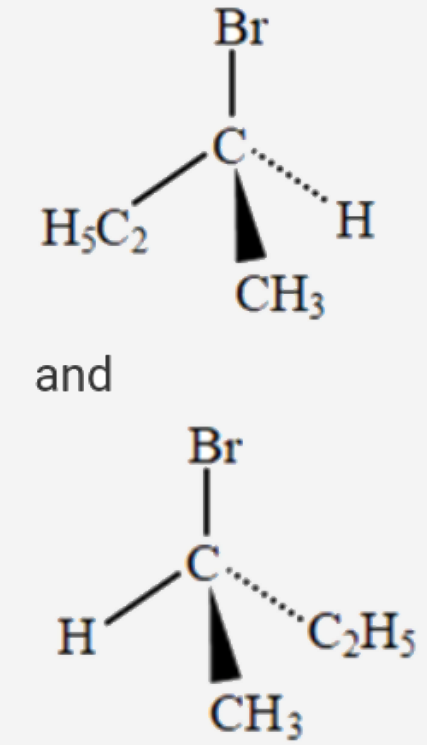Discuss the relation between free energy and EMF.
To discuss the relation between free energy and EMF (Electromotive Force), we can break down the concepts step-by-step:
Step 1: Understanding Maximum Work Done
The maximum work done (W_max) by an electrochemical cell can be expressed as:
Wmax=−nFE
Where:
- Wmax is the maximum work done by the system.
- n is the number of moles of electrons transferred in the reaction.
- F is Faraday's constant, approximately 96485C/mol.
- E is the EMF of the cell.
Step 2: Relating Work Done to Gibbs Free Energy
From thermodynamics, we know that the maximum work done by a system at constant temperature and pressure is equal to the change in Gibbs free energy (ΔG):
Wmax=−ΔG
Combining this with the previous equation, we have:
−ΔG=−nFE
This simplifies to:
ΔG=−nFE
Step 3: Analyzing the Significance of the Relation
From the equation ΔG=−nFE, we can analyze the relationship between free energy and EMF:
- If E>0 (the cell has a positive EMF), then ΔG<0. This indicates that the reaction is spontaneous.
- Conversely, if E<0, then ΔG>0, indicating that the reaction is non-spontaneous.
Conclusion
The relationship between free energy (ΔG) and electromotive force (EMF, E) is crucial in determining the spontaneity of electrochemical reactions. A positive EMF corresponds to a negative Gibbs free energy change, signifying that the reaction can occur spontaneously.
---
The maximum work done (W_max) by an electrochemical cell can be expressed as:
Wmax=−nFE
Where:
- Wmax is the maximum work done by the system.
- n is the number of moles of electrons transferred in the reaction.
- F is Faraday's constant, approximately 96485C/mol.
- E is the EMF of the cell.
From thermodynamics, we know that the maximum work done by a system at constant temperature and pressure is equal to the change in Gibbs free energy (ΔG):
Wmax=−ΔG
Combining this with the previous equation, we have:
−ΔG=−nFE
This simplifies to:
ΔG=−nFE
From the equation ΔG=−nFE, we can analyze the relationship between free energy and EMF:
- If E>0 (the cell has a positive EMF), then ΔG<0. This indicates that the reaction is spontaneous.
- Conversely, if E<0, then ΔG>0, indicating that the reaction is non-spontaneous.
The relationship between free energy (ΔG) and electromotive force (EMF, E) is crucial in determining the spontaneity of electrochemical reactions. A positive EMF corresponds to a negative Gibbs free energy change, signifying that the reaction can occur spontaneously.
Topper's Solved these Questions
- CHEMICAL THERMODYNAMICS Book:ICSEChapter:CHEMICAL THERMODYNAMICS Exercise:ESSAY (LONG ANSWER) TYPE QUESTIONS
Explore 32 Videos
- CHEMICAL THERMODYNAMICS Book:ICSEChapter:CHEMICAL THERMODYNAMICS Exercise:OBJECTIVE (MULTIPLE CHOCE) TYPE QUESTIONS
Explore 59 Videos
- CHEMICAL THERMODYNAMICS Book:ICSEChapter:CHEMICAL THERMODYNAMICS Exercise:VERY SHORT ANSWER TYPE QUESTIONS
Explore 56 Videos
- CHEMICAL BONDING AND MOLECULAR STRUCTUREBook:ICSEChapter:CHEMICAL BONDING AND MOLECULAR STRUCTUREExercise:NCERT TEXT-BOOK EXERCISES ( WITH HINTS AND SOLUTIONS)
Explore 47 Videos
- CLASSIFICATION OF ELEMENTS AND PERIODICITY IN PROPERTIESBook:ICSEChapter:CLASSIFICATION OF ELEMENTS AND PERIODICITY IN PROPERTIESExercise:NCERT TEXT-BOOK. EXERCISE (With Hints and Solutions)
Explore 63 Videos
Similar Questions
Knowledge Check
The correct relationship between free energy change in a reaction and the corresponding equilibrium constant Kc is:
AΔG=RTlnKcB−ΔG=RTlnKcCΔG∘=RTlnKcD−ΔG∘=RTlnKc
The relation between ΔU is :
View SolutionThe relationship between the free energy change (ΔG) and entropy change (ΔS) at constant temperature (T) si
View SolutionThe correct relationship between free energy change in a reaction and the corresponding equilibrium constant Kc is:
View SolutionThe relation between given pair is

View SolutionDiscuss the similarities between the energy stored in the electric field of charged capacitor and the energy stored in the magnetic field of a current-carrying coil.
View SolutionExplain surface energy of a liquid. What is the relation between surface tension and surface energy ?
View SolutionWrite the equation showing the relationship between standard free energy and standard cell potential.
View Solution
_S01_028_Q01.png)